You’ve probably heard your fair share about exfoliation and all its skin-saving benefits: supporting cell turnover, sloughing off dead skin cells, and revealing younger, brighter skin underneath. We’ve rounded up the best natural exfoliators to use at home to reveal fresher, healthier skin.
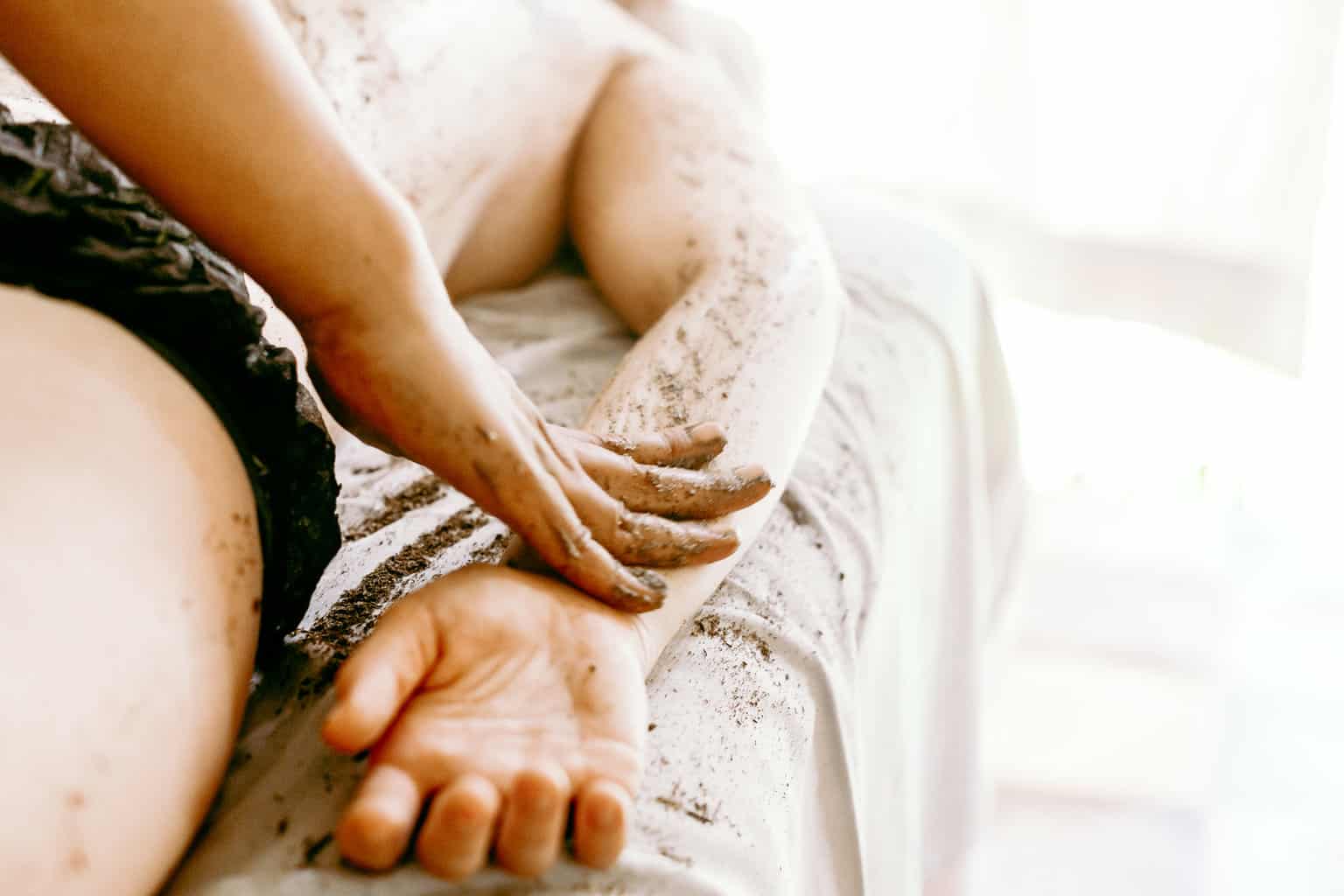
Jump to:
- What Is Exfoliation?
- Natural Physical Exfoliators
- 1. Coffee
- 2. Salt
- Natural Exfoliants for Sensitive Skin
- 3. Sugar
- 4. Oatmeal
- 5. Rice
- Natural Exfoliators for the Face
- 6. Baking Soda
- 7. Flaxseeds
- 8. Jojoba Beads
- Natural Chemical Exfoliants
- 9. Milk + Yogurt
- 10. Apples + Apple Cider Vinegar
- 11. Pineapple + Papaya Fruit Enzymes
- 12. Pumpkin Enzymes
- How To Exfoliate at Home
- Not Sure Where to Start? Easy DIY Exfoliant Recipes
- References
Meet the experts
- Joelle O’Connor, licensed esthetician and Cosmetic Coordinator at Schweiger Dermatology Group in New Jersey
- Tahl N. Humes, M.D., Medical Director and founder of VITAHL Medical Aesthetics
- Olivia Rose, N.D., Naturopathic doctor and founder of Reliv Organics
What Is Exfoliation?
“When we exfoliate, we are getting rid of the dead skin cells that can potentially cause acne breakouts and blackheads as well as accentuate fine lines and wrinkles,” explains skincare specialist Joelle O’Connor.
Chemical and mechanical exfoliation are important for stimulating cell renewal as we age. You need both in your regimen, so we’re sharing our favorite natural skin exfoliators to use for a good scrub at home.

Natural Physical Exfoliators
Physical exfoliators work manually to remove dead skin cells and other debris from the surface of your skin.
“Physical exfoliators in skincare products generally take the form of an abrasive scrub or paste containing things like crushed nut shells, sugar, salt, or jojoba beads,” O’Connor says.
1. Coffee
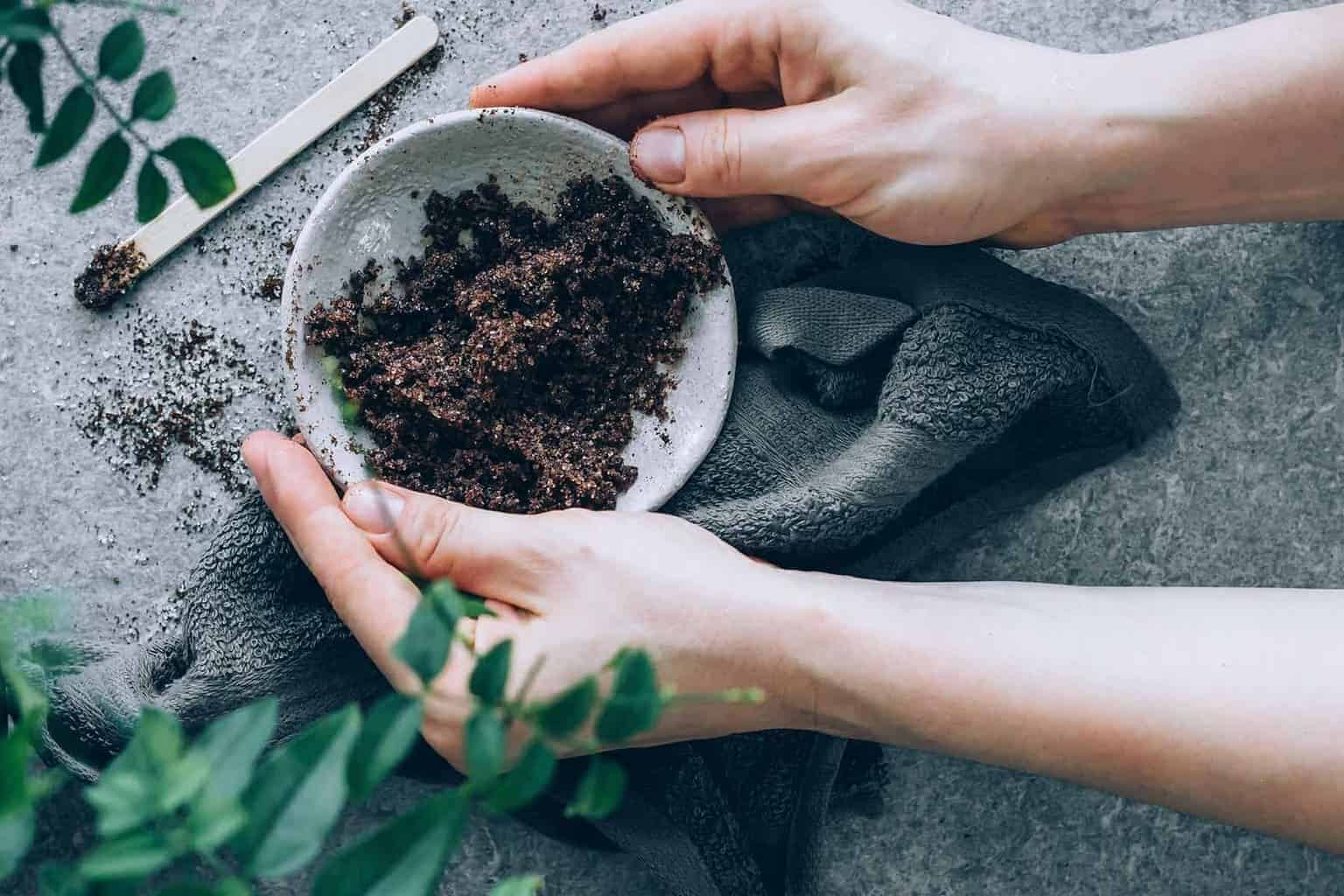
One of naturopathic doctor Olivia Rose’s favorite natural exfoliators for dry skin is something you probably drink every morning: coffee.
“Not only does it help your skin maintain its hydration level and offer UVA and UVB protection, but caffeic acid has been shown to reduce the signs of premature aging and support healthy collagen production,” she says.
The caffeine in ground coffee improves circulation and can temporarily reduce the appearance of cellulite [source]. Mix it with oil, mold it into cubes, or use it on its own in the shower.
Your feet can also benefit from a thorough scrubbing with coffee grounds—who knew!? Add a drop or two of peppermint essential oil to help with achy feet and add a fresh, natural scent.
2. Salt
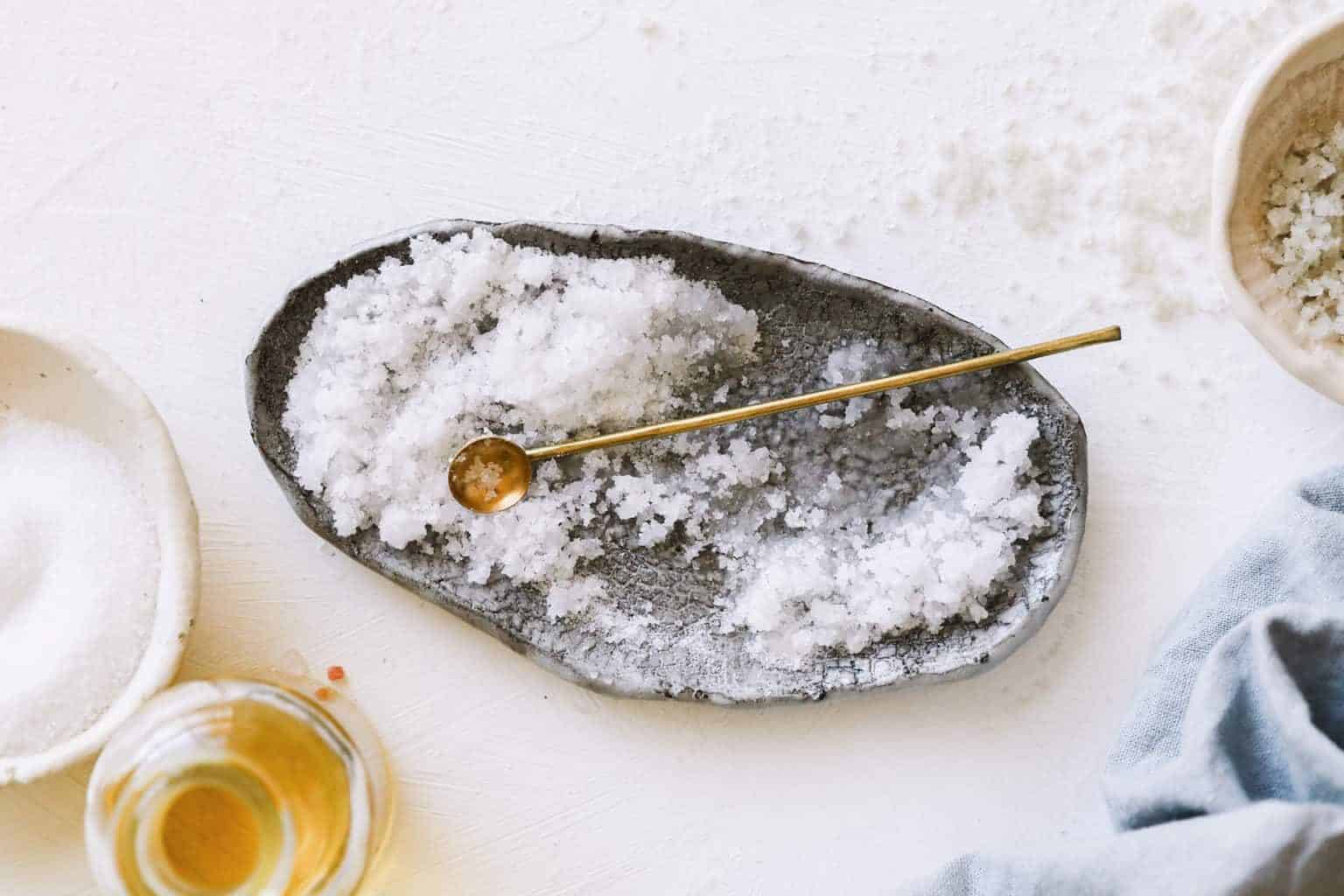
A wonderful choice when you want a good overall body exfoliation, salt can eliminate the rough, dry patches of dead skin. This citrus salt scrub is one option, while a papaya sea salt scrub might be your preference. If you’re looking for a breakdown of the best salts to try, check out these salt scrubs to help with dry skin, calluses, and cuticles.
And lastly, but not to be forgotten, salt can be used as the perfect scrub and soak for your feet, a requisite place for exfoliation with a scrub.
Keep in mind that some people with sensitive skin or breaks in their skin will experience a burning sensation from a salt exfoliator, so it isn’t for everyone all the time.
Natural Exfoliants for Sensitive Skin
For sensitive skin, choosing a natural exfoliator that is gentle yet effective is crucial to avoid irritation.
“Gentler forms of physical exfoliators contain enzymes from fruits like papaya and pineapple as well as finely grained rice powder,” says skincare specialist O’Connor.
Here are some of the best options:
3. Sugar

If you’re looking for an effective exfoliant that’s gentle enough for your face or other sensitive skin areas, you’ll want to use something finer than salt, which can be a little too abrasive. This sugar facial scrub is both simple to make and delightful on your skin.
Sugar can also be used to exfoliate your body, especially if you tend to shave your legs and scrub at the same time. That’s a good time to choose sugar over salt to avoid the expected sting.
Combine sugar with fruit enzymes for more gentle exfoliation. You could try out this pineapple sugar body scrub or consider a mango body scrub to see which scent appeals to you.
And never to be forgotten are your lips because they need exfoliation, too.
4. Oatmeal
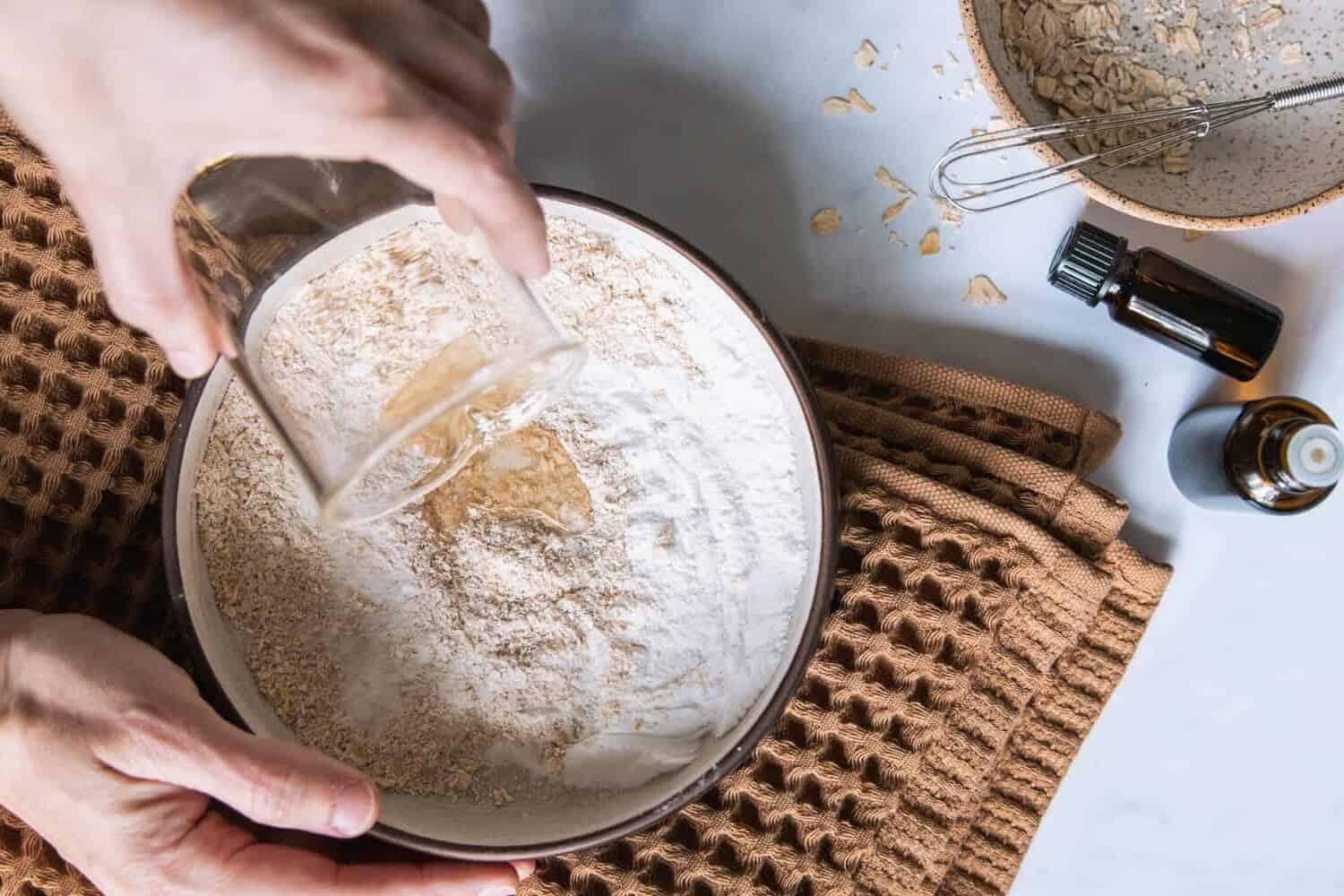
If your skin tends to lean to the sensitive side, you might want to check out the gentle effectiveness of organic oats as a physical exfoliant. They contain saponins that help cleanse the skin, while their anti-inflammatory properties soothe irritation [source].
The key to using oats is to grind them in a food processor before using. Ground oatmeal can absorb and remove surface dirt while providing gentle exfoliation.
“You need to grind them to the consistency of fine flour so you are not rubbing the whole grains on the body, which can be very irritating,” says O’Connor. “They can be mixed with coconut oil to make a nice paste and gently massaged into your skin in circular motions.”
You can use oats for a gentle body scrub, mix them with yogurt to create a gentle exfoliating mask, or combine them with herbs for a facial scrub alternative.
5. Rice
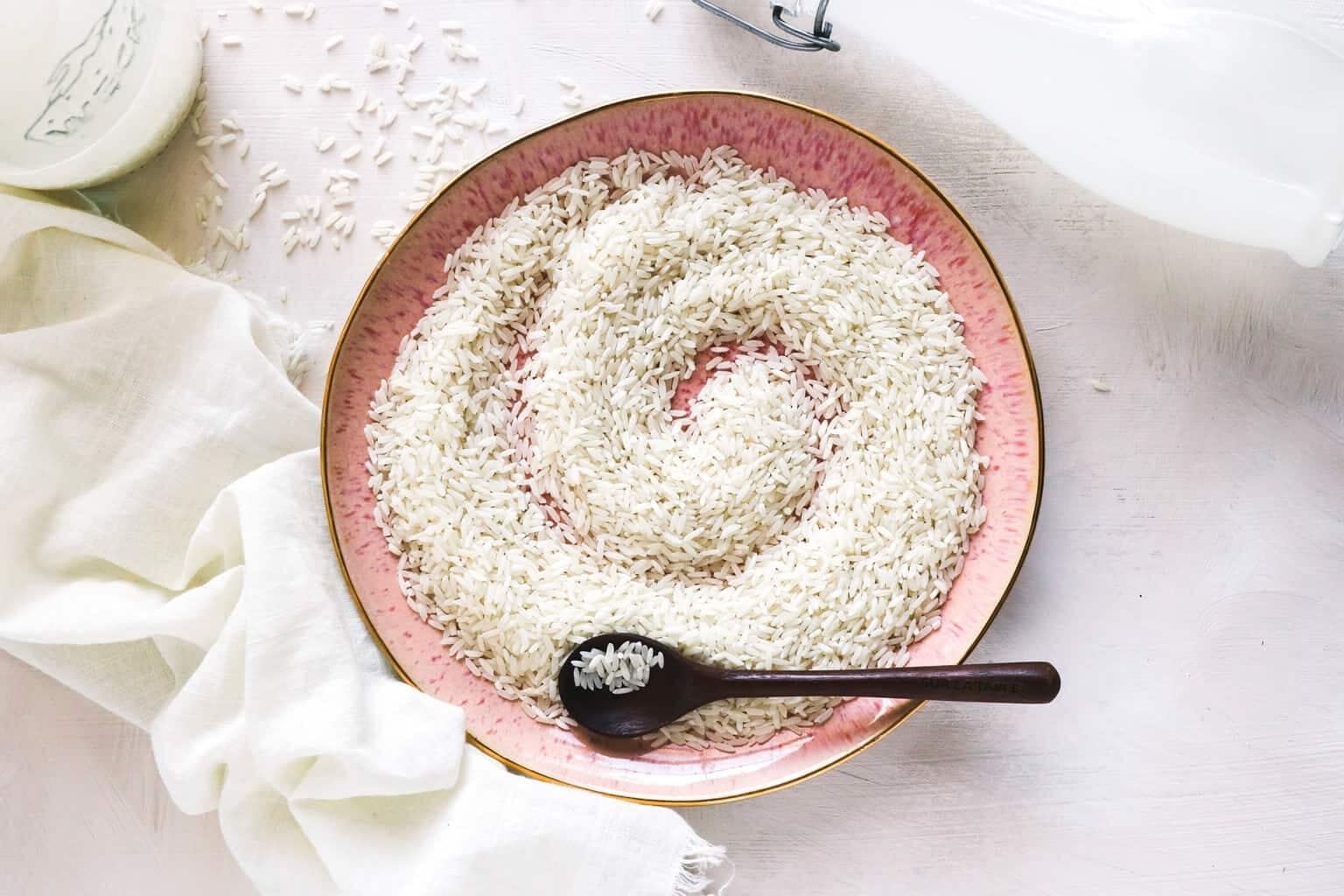
Ground rice bran is another gentle exfoliant suitable for sensitive skin that can be used on the face and the body. It has been a component in Asian beauty regimens for centuries to brighten the complexion and even out skin tone.
You can make a simple paste by adding water or combine it with green tea for additional antioxidants. We especially liked the feel of this oil-free pre-tan body polish and face scrub, and this daily cleanser is a great way to exfoliate with rice and ground almonds.
Natural Exfoliators for the Face
For the face, be very gentle and avoid scrubbing vigorously to prevent irritation.
6. Baking Soda
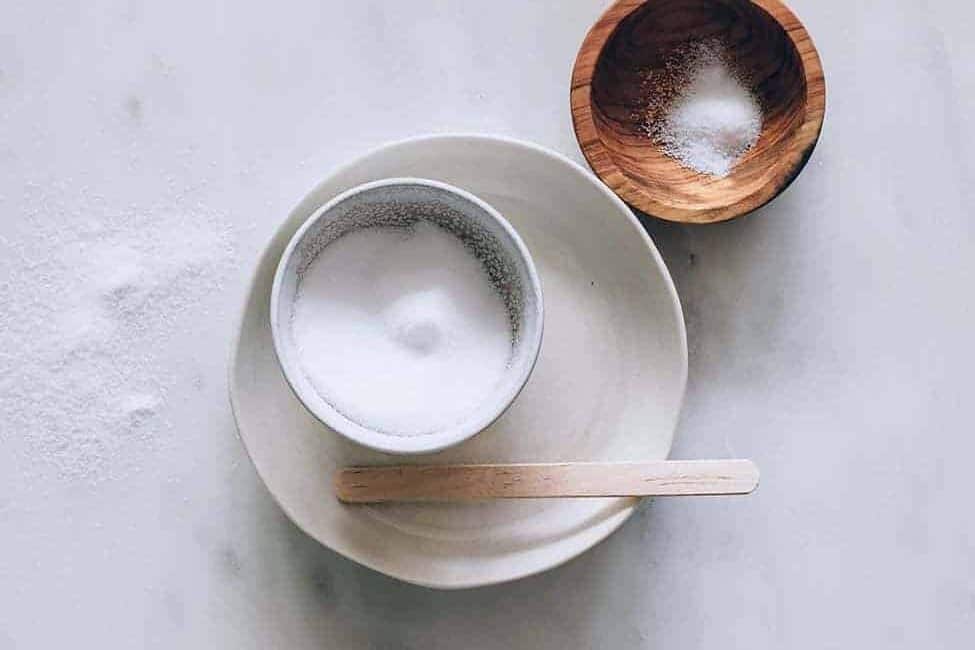
One of the most versatile items you probably already have in your home is baking soda. It can be used to lighten underarms, to make deodorant, in a bath soak, or to whiten your teeth. And it can work as a fine, gentle exfoliant for removing dead skin cells.
This easy cleanser recipe is great for all skin types: just mix a teaspoon of baking soda into your facial cleanser or make a baking soda face scrub by mixing it with rosewater or raw honey.
7. Flaxseeds
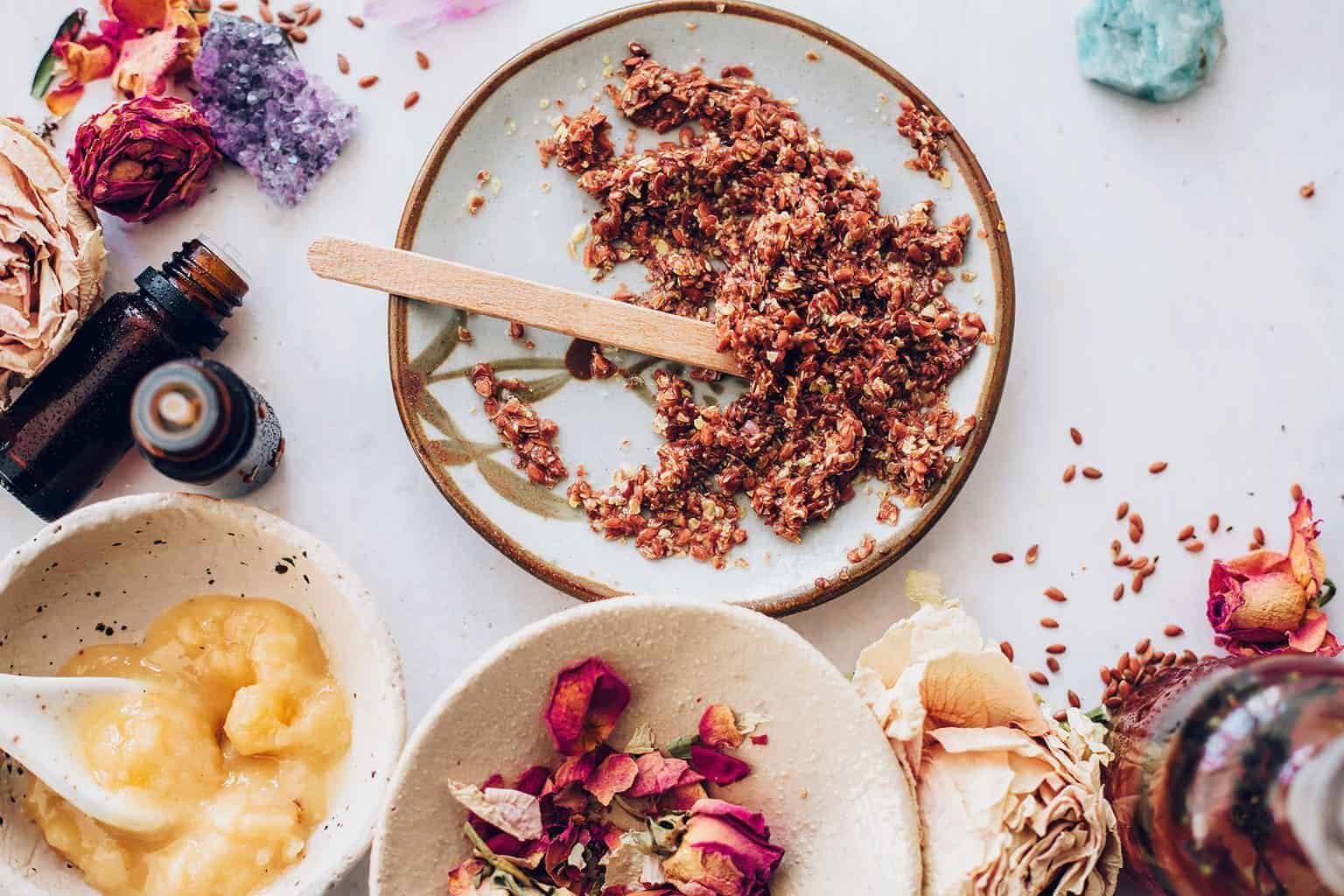
For gentle exfoliation, try ground flaxseeds, which are packed with anti-inflammatory omega-3 fatty acids. Flaxseeds also help hydrate your skin and are safe for acne-prone skin [source].
Exfoliate with this flaxseed eye mask, or add a tablespoon or two to this super soft anti-aging cleanser.
8. Jojoba Beads
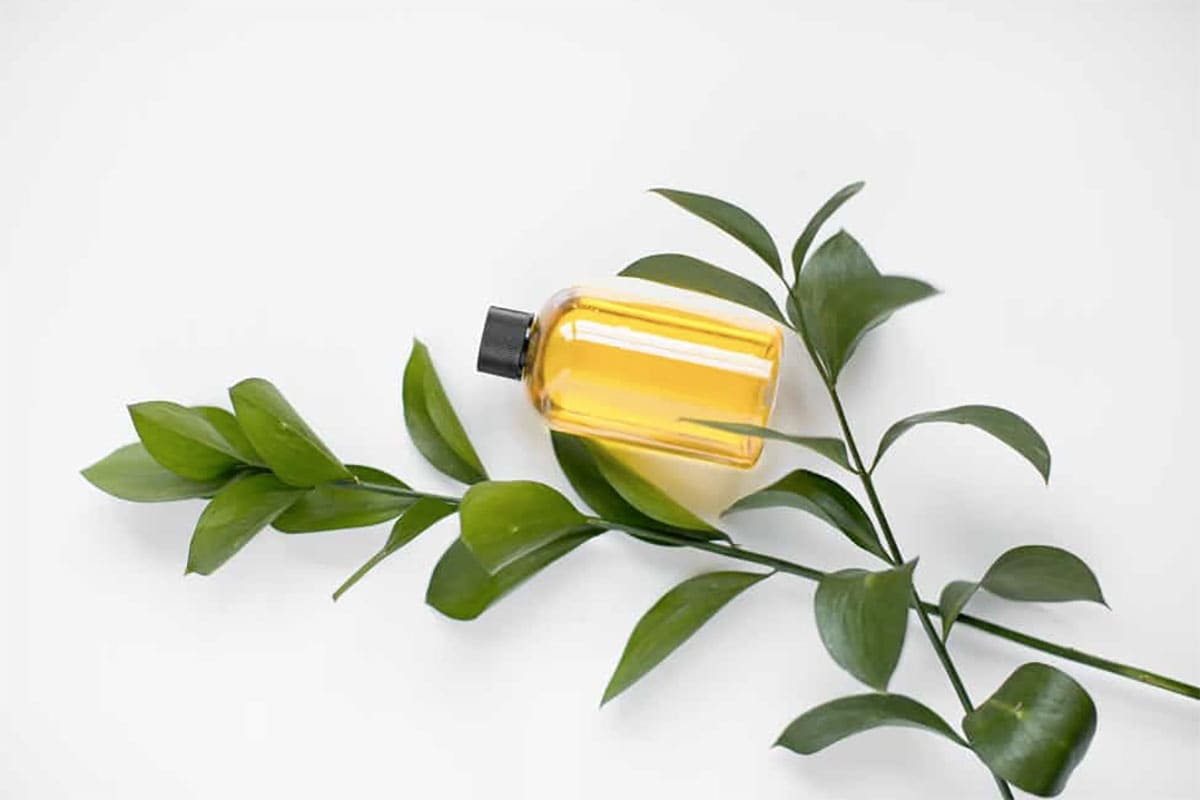
These are smooth, round wax beads that provide gentle exfoliation without the harshness of store-bought scrubs. They may feel more like a traditional scrub, but jojoba beads are an environmentally friendly, biodegradable option.
They are perfect for sensitive facial skin and effective at exfoliating.
Natural Chemical Exfoliants
The acids and enzymes contained in natural chemical exfoliants promote cell turnover, improve skin texture, brighten the complexion, and dissolve and remove dead skin cells without the need for physical scrubbing [source].
“Skin-friendly natural acids, such as alpha-hydroxy acids (AHAs) and beta-hydroxy acids (BHAs), loosen the bonds between the dead surface layers and the newer, more radiant skin underneath,” O’Connor explains. “This dissolves the dead skin cells without the use of abrasive force that can cause irritation.”
During the winter months, Dr. Tahl N. Humes recommends using a gentle chemical exfoliant over a manual one. “It’s less harsh than a grainy scrub or rough brush,” she says. “Chemical exfoliation will stimulate collagen production, minimize fine lines, and lift hyperpigmentation.”
9. Milk + Yogurt
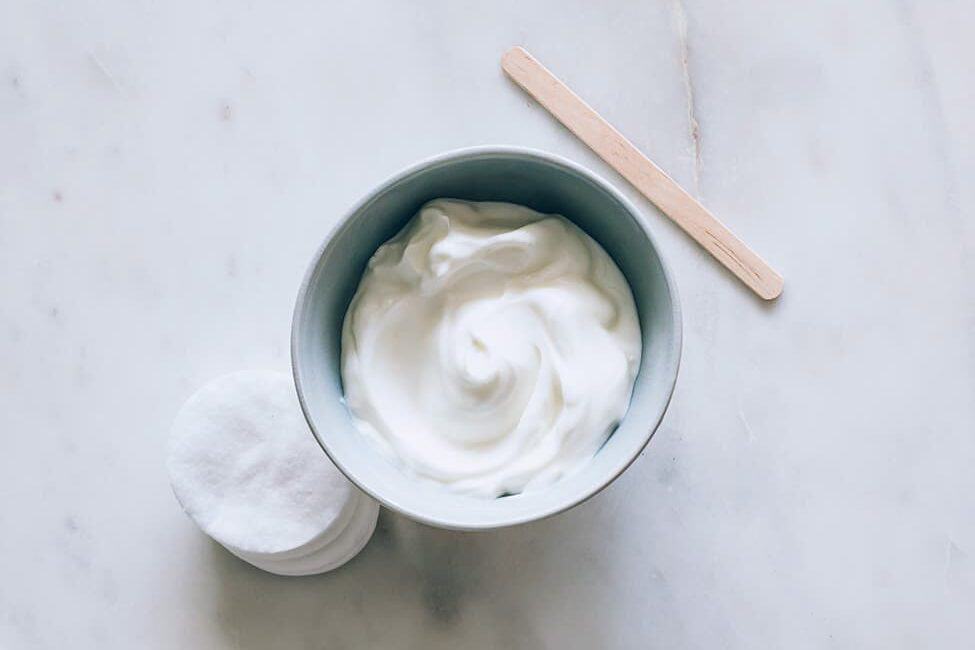
The lactic acid in milk can quickly go to work to remove dead skin cells [source]. To use it on your face, pour a small amount of milk onto your palm and massage it into your skin; it’s a great way to cleanse without soap. You can combine whole milk with a whipped egg for dry skin or add aloe vera for sensitive skin.
Yogurt masks are an excellent and relaxing way to exfoliate. Get head-to-toe milk benefits by adding 2–4 cups of plain, unsweetened yogurt or whole milk to your bath water.
10. Apples + Apple Cider Vinegar

Alpha-hydroxy acids are extremely beneficial for loosening dead cells and revealing the new skin beneath [source]. Malic acid, found in apples, is a fantastic choice for an exfoliating mask. This apple cider vinegar peel is also an option for use as a chemical exfoliant.
11. Pineapple + Papaya Fruit Enzymes
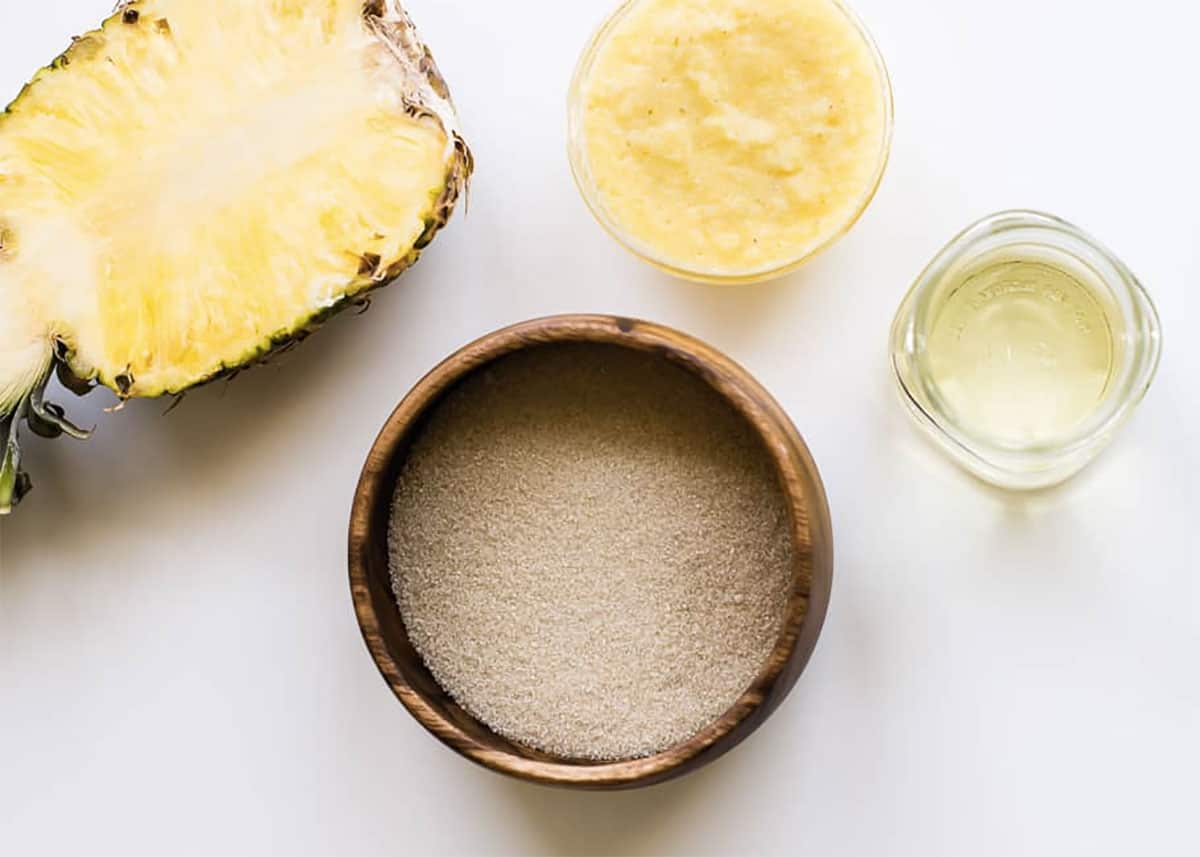
Papaya contains the enzyme papain [source], which is excellent for breaking down keratin, a protein that acts as a glue to keep dead skin cells together. Applying mashed papaya or a papaya mask can help exfoliate the skin naturally without physical abrasion.
Found in pineapples, the enzyme bromelain gently exfoliates the skin by digesting protein [source]. Masks with bromelain are especially good for sensitive skin when used in mild concentrations.
12. Pumpkin Enzymes
Pumpkins are rich in alpha-carotene, zinc, and vitamins A and C [source]. They also contain natural enzymes that offer gentle exfoliation while delivering those nutrients to the skin. You can use pumpkin puree mixed with a bit of honey for a natural enzyme mask.
How To Exfoliate at Home
Exfoliating is a pretty simple process once you get into the habit of making it a regular part of your routine. Here are some basic steps and tips to effectively exfoliate your skin:
Apply
Start with clean skin to ensure that you are removing dead skin cells and not pushing around dirt and oil.
Apply the scrub using gentle circular motions with your fingers or a soft cloth. Don’t forget areas like your underarms and bikini line.
For the face, be very gentle and avoid scrubbing vigorously to prevent irritation.
Don’t have time? Combine cleansing and exfoliating with an exfoliating soap bar that’s gentle on the skin, using ingredients like seeds, cornmeal, coffee, or oats.
I also like using soap and scrub cubes because you can make them ahead of time with your favorite ingredients.
Rinse with lukewarm water after scrubbing and pat dry with a soft towel.
Frequency
Don’t go overboard: Over-exfoliating can damage your skin, leading to redness, irritation, and sensitivity.
- For physical exfoliants, once or twice a week is generally sufficient.
- For chemical exfoliants, 1–3 times weekly for mild formulations is plenty.
Aftercare
Moisturize: Always follow up exfoliation with a good moisturizer or body lotion to soothe the skin and restore its barrier.
Sun protection: Chemical exfoliants can make your skin more sensitive to the sun. Apply a broad-spectrum sunscreen, especially if you exfoliate in the morning or are going outdoors in any weather.
Not Sure Where to Start? Easy DIY Exfoliant Recipes
If you’ve never made a scrub before, these easy recipes are the perfect place to start. You’ll be glowing in no time.
- Sugar Face Scrub: Mix 1 tablespoon of fine sugar with 1 tablespoon of honey and a few drops of lemon juice (optional) for extra brightness.
- Oatmeal Scrub: Grind oatmeal in a blender, then mix with honey and yogurt for a soothing and exfoliating face mask.
- Coffee Body Scrub: Mix ground coffee with coconut oil and sugar to create a scrub that is perfect for the body, especially for use in areas prone to cellulite.
By following these steps and tips, you can effectively and safely exfoliate your skin at home, helping to maintain its health and beauty. No matter how you choose to exfoliate, make sure it’s a part of your routine!
References
References
Herman A, et al. Caffeine’s mechanisms of action and its cosmetic use. Skin Pharmacol Physiol. 2013.
Pazyar N, et al. Oatmeal in dermatology: a brief review. Indian J Dermatol Venereol Leprol. 2012.
Balić A, et al. Omega-3 versus omega-6 polyunsaturated fatty acids in the prevention and treatment of inflammatory skin diseases. Int J Mol Sci. 2020.
Tang SC, et al. Dual effects of alpha-hydroxy acids on the skin. Molecules. 2018.
Grimes PE, et al. The use of polyhydroxy acids (PHAs) in photoaged skin. Cutis. 2004.
Kong YR, et al. Beneficial role of Carica papaya extracts and phytochemicals on oxidative stress and related diseases: a mini review. Biology. 2021.
Rathnavelu V, et al. Potential role of bromelain in clinical and therapeutic applications. Biomed Rep. 2016.
Batool M, et al. Nutritional value, phytochemical potential, and therapeutic benefits of pumpkin (Cucurbita sp). Plants (Basel). 2022.
This post was medically reviewed by Dr. Jennifer Haley, a board-certified dermatologist with extensive experience in medical, cosmetic, and surgical dermatology. Learn more about Hello Glow’s medical reviewers here. As always, this is not personal medical advice, and we recommend that you talk with your doctor.
861
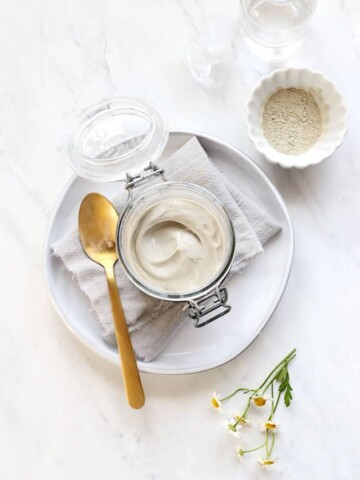
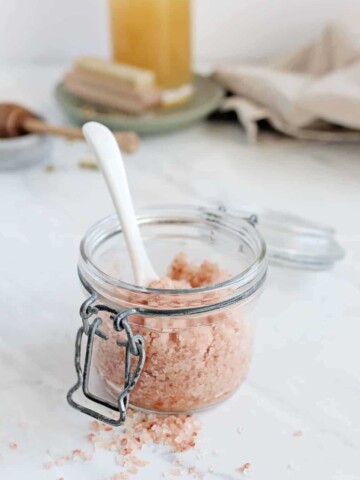
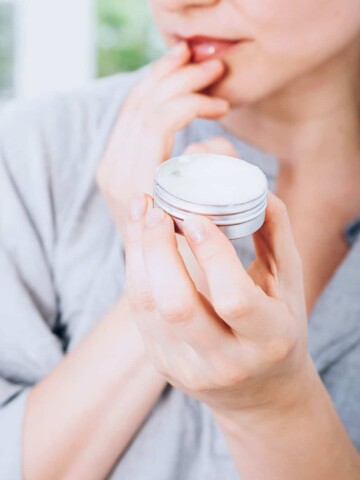
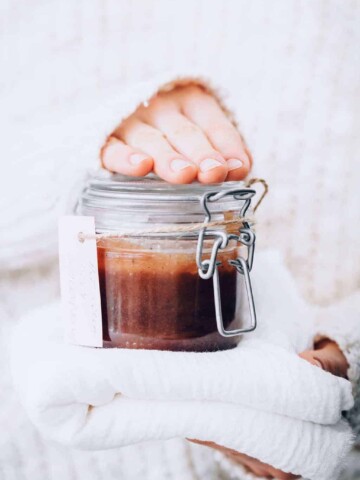
Unique says
I've been using lemon sometimes lime i didn't notice any difference what am i doing wronI've been using lemon sometimes lime i didn't notice any difference what am i doing wrong?
Lina says
"Keep in mind that some people with sensitive skin or breaks in their skin will experience a burning sensation from a salt exfoliator." - yep, that was a total disaster for me when I used salt for the first time.
https://whatmenlike.net/
inam ul haq says
baking soda is the perfect choice here, thanks, man!
Ankita says
Tried the baking soda one first and it was great. the next day I tried the honey and sugar one and it worked even better. I don’t get acne but my skin was looking dull and blemishy. now it looks awesome and feels so soft. 🙂 thanks
Aminu zainab says
This is a beautiful one, it is absolutely helpful, great work
www says
This is perfekt natural skin
Millicent says
Can ripe Avocado do???
Wayne says
Why is there a Superdrug sponsored advert in the middle of all this? Might as well put a nuclear fuel promotion on the Greenpeace site.
Melly says
WOW!! great tips. All tips are excellent and Baking Soda is more helpful for me.
Heather @ Simple Fresh Natural says
I love exfoliating with a sugar scrub in the winter when my skin is super dry! I mix sugar and almond oil with some drops of essential oil. It is so refreshing and soothing!
Charlotta Ferguson says
Rub some mango on your face and leave it for about 30min. Just rinse with water and it feels so smooth!
Jo says
Green or ripe?
Thx
Rick says
Hi all. I have used onion juice mixed with lemon juice. It has an immediate result which you can see and feel.
It has taken the acne at my nose completely away in just a few days of application which I have had for over 40 years.
It has almost reduced entirely the skin eruptions I have had from over exposure to the sun on my forehead and scalp. My hair is not falling out anymore, it has lightened up and the grey has been washed away by about 70%. I made a shampoo from the mixture which I use daily now.
I use the shampoo as a body wash as well and the effect is a cleaner, softer skin in which 90% of the skin tags have disappeared.
Yes there is a major onion smell which I have added an essential oil to remedy this. I chose lavender for this because of its calming fragrence and antiimflamatory properties.
I'm happy with these results. I have not received these results from any over the counter stuff or by prescription.
Though these is topical application, I have deloped a supplement based on these results which seems to have great promise.
I hope this helps...
Mitrra. N says
Hopefully this remedies could solve my skin problems..
Rue says
Hello Rick
May i ask how exactly do you use the mixture (onion + lemon juice) in your skin to rid of acne and skin tags?
Tequila says
Well, I finally ttied the baking soda and honey! I mixed a teaspoon of baking soda to a half teaspoon of honey. Then I left it on for 5min. My face feels like I just left a facial treatment session. It feels really soft and clean! Wow, if I knew this, I wouldn't have spent all that money on other facial products!
clau says
I once tried with lemon juice over my face and it hurt so bad... had to cleanse it immediatly after a few seconds... :(
morgan says
I love using oats to exfoliate my skin!!